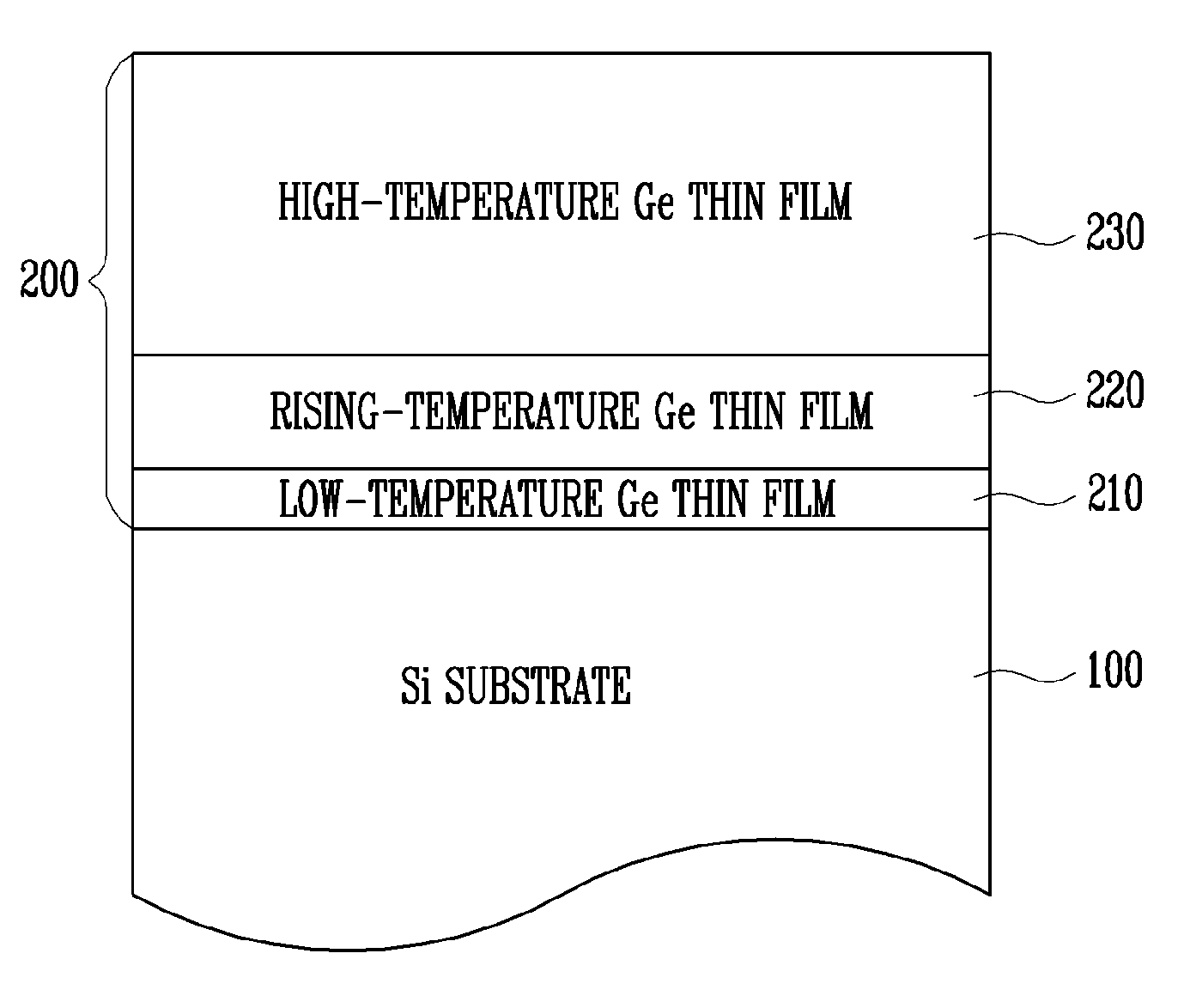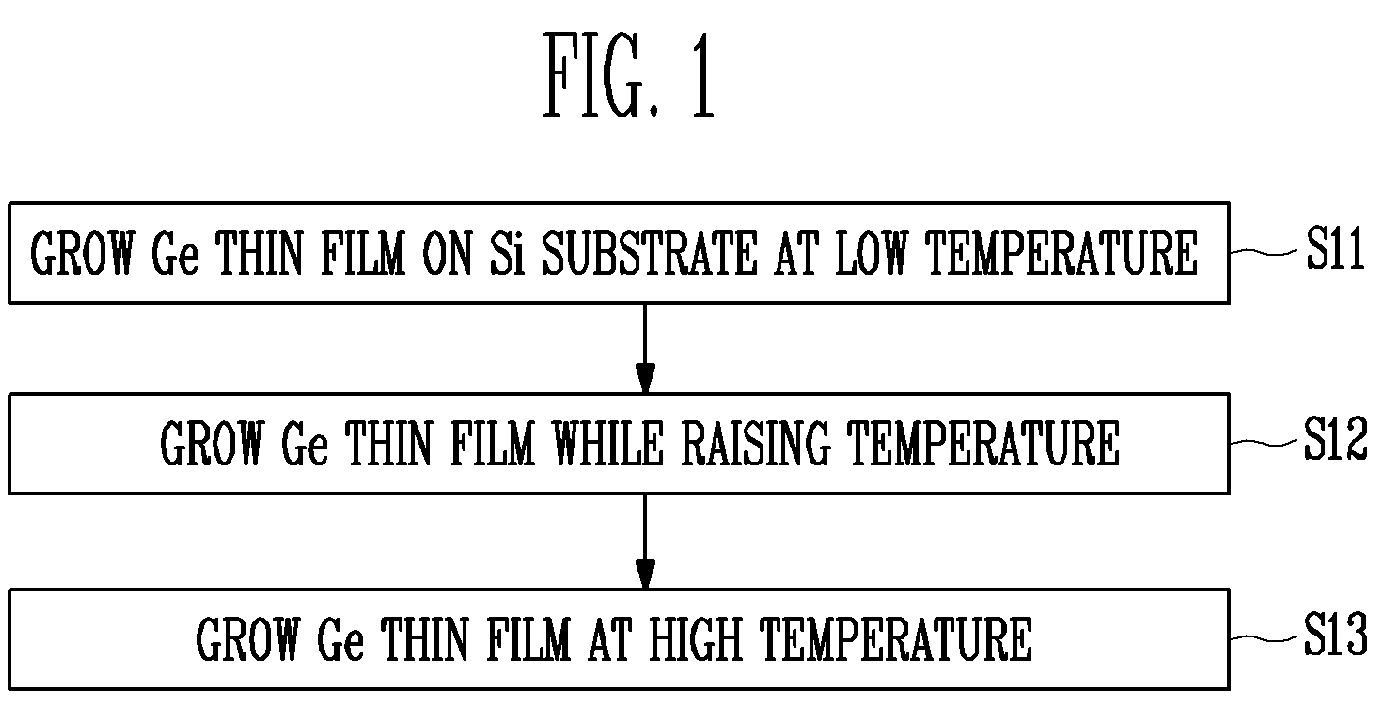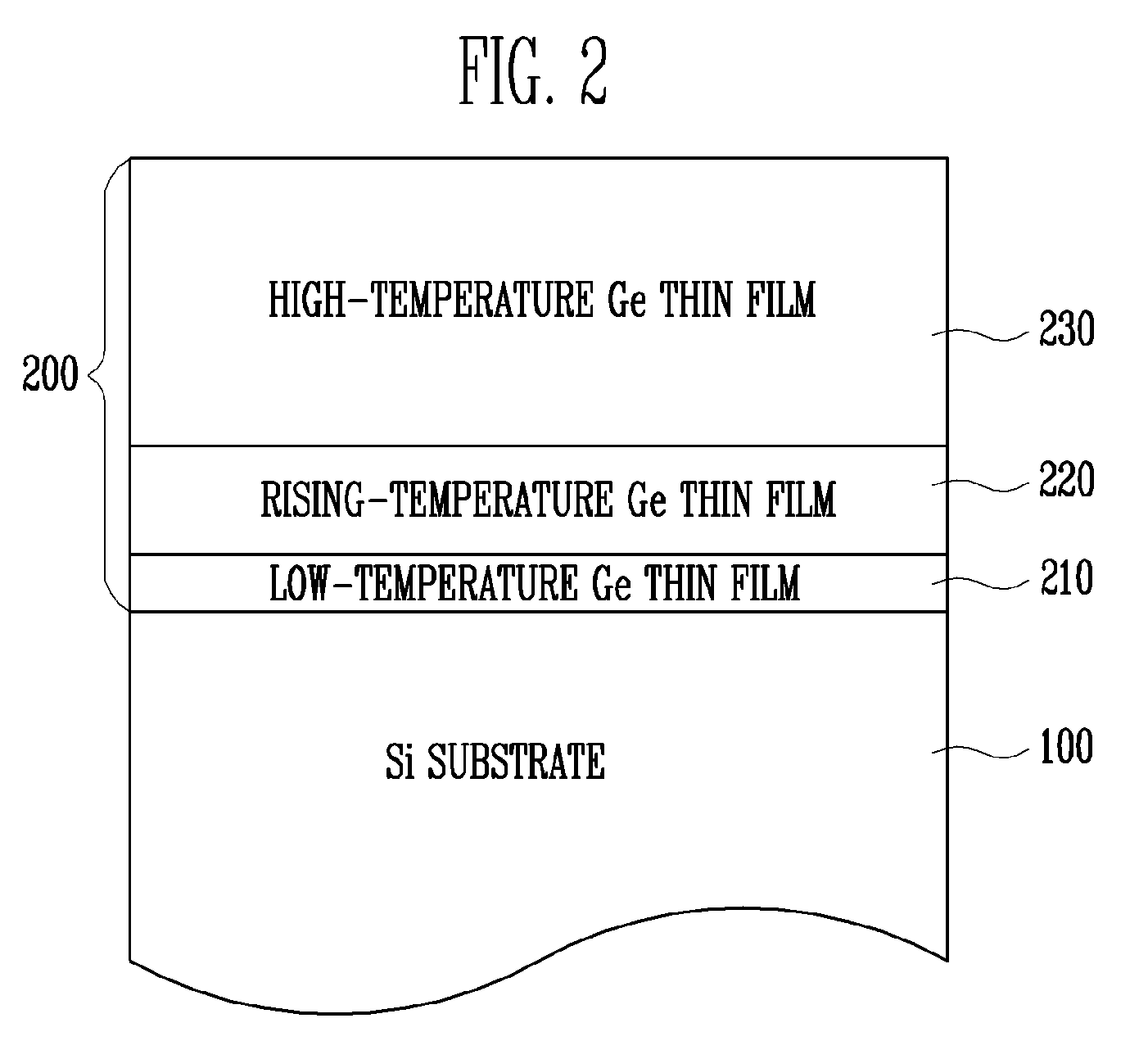Growth of germanium epitaxial thin film with negative photoconductance characteristics and photodiode using the same
a thin film, negative technology, applied in the direction of crystal growth process, polycrystalline material growth, manufacturing tools, etc., can solve the problems of reducing the efficiency of the device manufacturing process, affecting so as to reduce the pressure of chemical vapor deposition and improve the quality of the device. , the effect of excellent mass production
- Summary
- Abstract
- Description
- Claims
- Application Information
AI Technical Summary
Benefits of technology
Problems solved by technology
Method used
Image
Examples
example 1
[0047]Growing Low-Temperature Germanium (Ge) Thin Film
[0048]Under RPCVD conditions, a low-temperature germanium (Ge) thin film 210 was deposited to be grown on a silicon substrate 100 to a thickness of 100 nm at a deposition rate of 100 Å / min by flowing GeH4 gas diluted into 20 vol % with hydrogen at a flow rate of 150 sccm under a temperature of 420° C. and a pressure of 60 Torr, and flowing hydrogen gas as a carrier gas at a flow rate of 20 slm.
[0049]Growth of Rising-Temperature Germanium (Ge) Thin Film
[0050]Then, under RPCVD conditions, a temperature of the low temperature germanium (Ge) thin film 210 was raised from 420° C. to 680° C. at a rate of 12° C. per minute, and GeH4 gas was injected at a flow rate of 10 sccm under a pressure of 60 Torr, and thus a rising-temperature germanium (Ge) thin film 220 was grown to a thickness of 200 nm at the same deposition rate as that of the low-temperature germanium (Ge) thin film.
[0051]Growth of High-Temperature Germanium (Ge) Thin Film
[0...
experimental example
[0053]Observation through Transmission Electron Microscope (TEM)
[0054]A cross section of the low-temperature germanium (Ge) thin film 210 grown in Example 1 was observed through a TEM, and the observed results are illustrated in FIG. 3. Further, a TEM with high resolution was used to confirm crystallinity, and the confirmed results are illustrated in FIG. 4.
[0055]Further, a cross section of a germanium (Ge) epitaxial thin film 200 grown by a three-stage growth method including low, rising and high temperatures in Example 1 was confirmed by a TEM, and the confirmed results are illustrated in FIG. 5.
[0056]It can be observed through FIG. 3 that misfit dislocations were generated across the entire surface of the low-temperature germanium (Ge) thin film 210 to alleviate a stress caused by a difference in lattice constant between silicon (Si) and germanium (Ge), most of the dislocations spread onto the surface in the shape of penetrating dislocations, and reduced surface roughness was exh...
PUM
| Property | Measurement | Unit |
|---|---|---|
| thickness | aaaaa | aaaaa |
| thickness | aaaaa | aaaaa |
| temperature | aaaaa | aaaaa |
Abstract
Description
Claims
Application Information
 Login to View More
Login to View More - R&D
- Intellectual Property
- Life Sciences
- Materials
- Tech Scout
- Unparalleled Data Quality
- Higher Quality Content
- 60% Fewer Hallucinations
Browse by: Latest US Patents, China's latest patents, Technical Efficacy Thesaurus, Application Domain, Technology Topic, Popular Technical Reports.
© 2025 PatSnap. All rights reserved.Legal|Privacy policy|Modern Slavery Act Transparency Statement|Sitemap|About US| Contact US: help@patsnap.com



